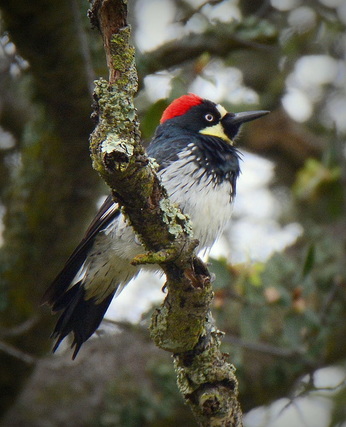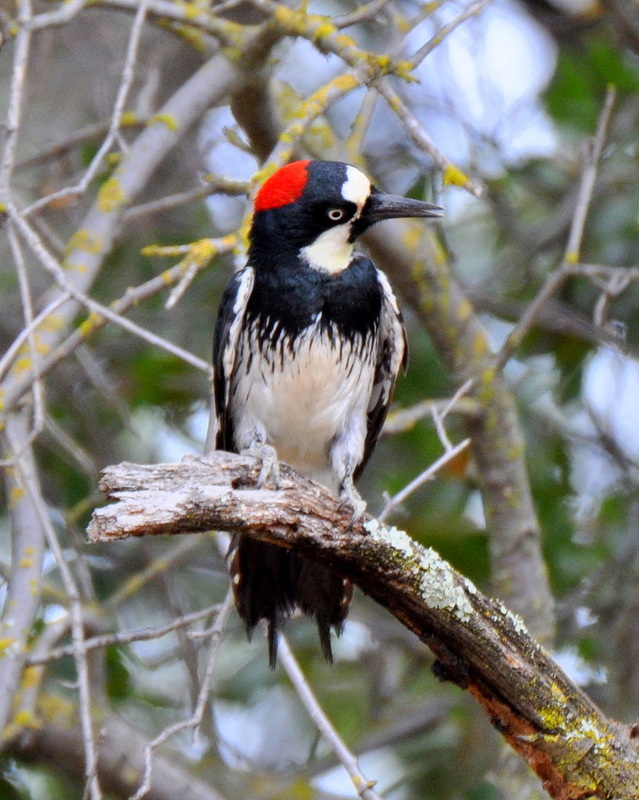October 2016 - the Acorn Woodpecker
 Photo courtesy of Frank R. Perez Photo courtesy of Frank R. Perez
There are a few birds one could consider as clowns either because of their actions or their appearance. The acorn woodpecker with its clown-face of bold black, red and yellowish white is our clown of the month. The body is a glossy blue-black with white underneath and patches of white under the wings. The head has a red cap. He has a bold white eye ring and a rather short tail that provides support while perched on the side of trees.
These gregarious woodpeckers live in groups of a dozen or more. Where there is one, there are likely many more. These woodpeckers are common in our oak and pine-oak woodlands at higher elevations. True to their name, they love acorns. And they hoard them. Lots. Of. Them. These birds are the champions of hoarding; sometimes poking hundreds or thousands of acorns in a single tree. The record holder contained about 50,000 acorns covering almost every square inch of the tree trunk and limbs. The acorn woodpeckers will defend their granaries against potential thieves like squirrels, jays, and even other acorn woodpeckers. The family group sticks together to keep their granary safe. Acorn storage begins in autumn as our oak trees are just now starting to drop their acorns. The woodpeckers go into overdrive to pick up and poke in as many acorns as possible. And not just any hole will do. Each acorn must fit into its hole precisely. Then it is off to the next acorn. These granaries provide most of the winter diet for Acorn Woodpeckers. Other times of the year they will also feed on tree sap, oak catkins, other tree flowers and fruit. Insects caught on the wing round out their diet. Unfortunately, acorn woodpeckers don’t just use trees for storing acorns. Fence posts, utility poles, even the siding on your house is fair game for the pantry. University of California Agriculture and Natural Resources site has great information about preventing these birds from using your house as their pantry. Acorn woodpecker society is complicated. A reproductive strategy called polygynandry is when two or more males breed with two or more females. The females may all lay their eggs in the same nest frequently destroying eggs laid previously. Then there are the helpers, usually the grown offspring from the previous year, who aid in feeding the young from this year. So this year’s kids may be fed by their parents, older siblings, uncles, and aunts. One can see how this can be successful rather than relying on just two parents; there is a “village” to raise the young. Woodpeckers are noisy and use different calls to relay different information. The less boisterous calls are for greetings. As the calls gain intensity they are likely for territorial displays and boundary disputes. On your next walk through a woodland listen for the parrot-like squawks and look at the top of bare trees for the clowns of the avian world. When flying, the white patches under the wings are easy to spot. And look at the trees to see if you can find an active acorn woodpecker granary. |
Learn More!
|


